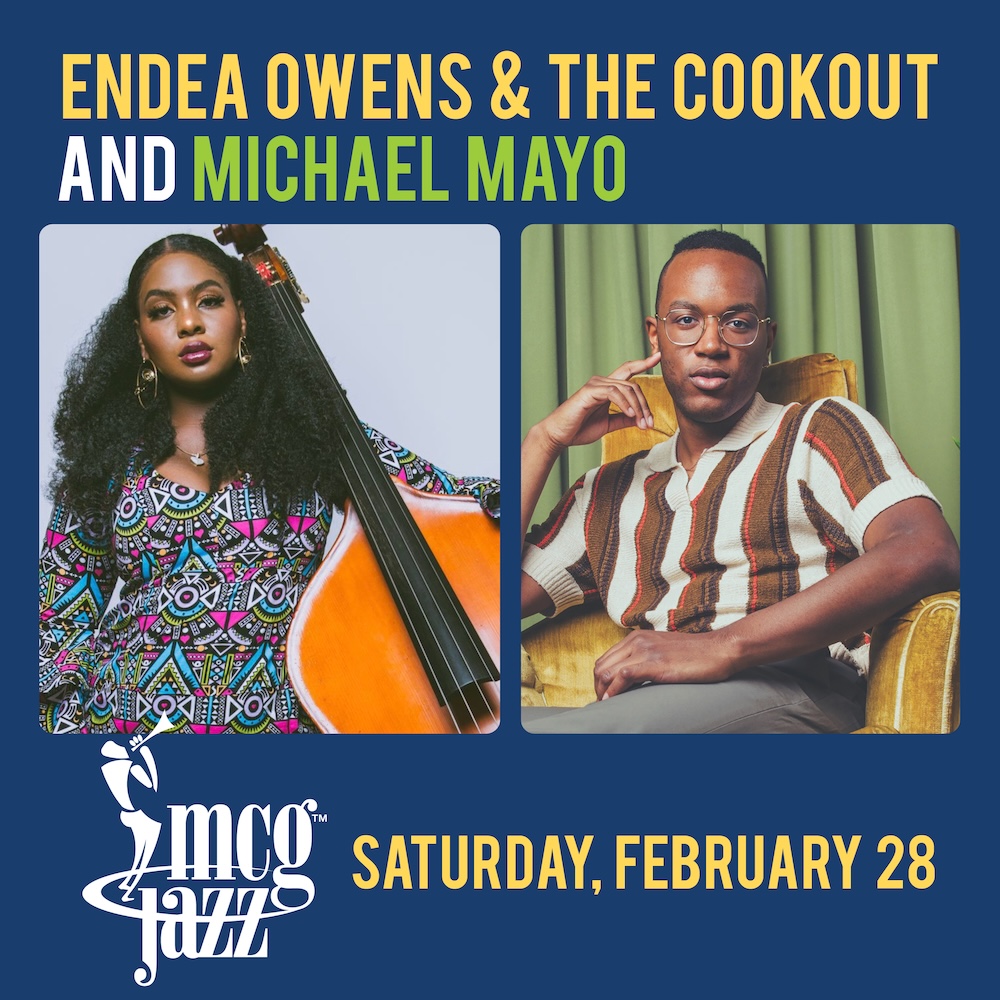Oct 28, 2025 10:47 AM
In Memoriam: Jack DeJohnette, 1942–2025
Jack DeJohnette, a bold and resourceful drummer and NEA Jazz Master who forged a unique vocabulary on the kit over his…
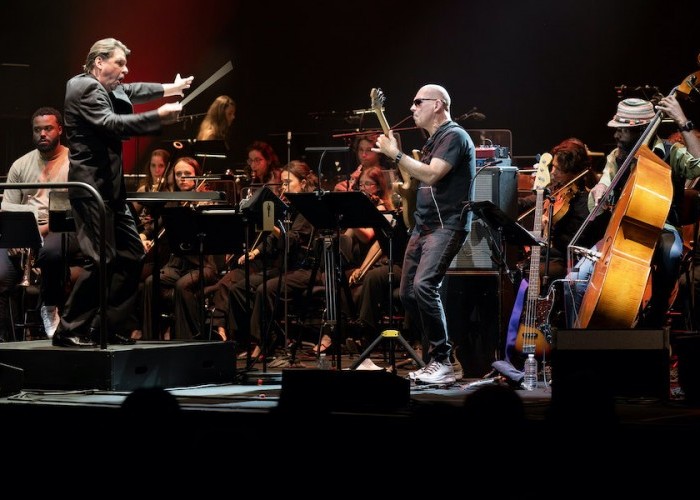
Saxophonist Isaiah Collier, trumpeter Wallace Roney Jr., pianist Craig Taiborn, guitarist Marc Ducrete and bassist Brad Jones joined conductor Ernst Theis and the 46-piece Ostinato Orchestra in a Denardo Coleman-produced re-envisioning of Ornette Coleman’s The Shape Of Jazz To Come at the Jazz a la Villette Festival.
(Photo: Courtesy Jazz a la Villette)The shape of jazz to come, as summoned by Denardo Coleman and all-star company with symphony orchestra in an extraordinary concert headlining the Jazz a la Villette Festival in the Grande salle Pierre Boulez at the Philharmonie de Paris on Aug. 30, is vast and fluid, dramatic and exciting. It encompasses impassioned solos and collective improvisation, complex composed scores conducted for their expressive richness, regard for the past as a foundation not a prison, and the promise of ever further vistas.
Celebrating his father, Ornette Coleman, the composer-performer-theorist who died in 2015 at age 85, Denardo — Ornette’s drummer since age 10 — produced a radical yet reverent re-envisioning of his father’s 1959 breakthrough album The Shape Of Jazz To Come. Originally recorded by Ornette’s quartet with Don Cherry, Charlie Haden and Billy Higgins, six now-classic compositions including “Lonely Woman,” “Peace” and “Ramblin’” were then considered iconoclastic for being based on melodies rather than progressions, played without a chording instrument, breaking expected chorus lengths, changing tempo. At Jazz a la Villette, a two-week fest inhabiting an arts park at least double the urban footprint of Lincoln Center, Ornette’s compositions unfolded new dimensions in fully original concerto grosso, band-within-band arrangements from notable composers including Denardo himself. He’s negotiating with the festival for potential release of the multichannel concert recording.
Clad in a green silk suit, standing in front of his drum platform and starry collaborators — saxophonist Isaiah Collier, trumpeter Wallace Roney Jr., pianist Craig Taiborn, guitarist Marc Ducret, bassist Brad Jones, conductor Ernst Theis and the 46-piece Ostinato Orchestra — Denardo, 69, announced to the full house (a capacity of 2,400), “You are now in Harmolodic world — that’s what Ornette created. He saw music as very broad — not something that is limiting. … He wanted to remove the caste system from sound,” ushering jazz musicians and symphonic musicians into “one world, one ensemble.”
Although the senior Coleman may be best known as an alto saxophonist, trumpeter and violinist in small groups with Cherry, Haden, Higgins, Edward Blackwell, Dewey Redman, David Izenzon, Charles Moffett and more, or his amplified Prime Time septets and octets (always driven by Denardo), Ornette also engaged with so-called “classical” forces early in his career. In 1961 — two years after The Shape Of Jazz To Come, his debut on Atlantic Records — he participated in Gunther Schuller’s Third Stream workshops and recordings. Ornette’s famously self-produced 1962 Town Hall concert included a piece written for string quartet. He wrote for an orchestra contrasting with his trio plus Pharoah Sanders on Chappaqua Suite of 1965, for strings backing Alice Coltrane on Universal Consciousness (1971) and full instrumentation in Skies Of America, which was meant to enfold his band, too, although only Ornette played with the London Symphony Orchestra on the 1972 version.
In 1983 Coleman and conductor John Giordano collaborated on updating Skies, performing it with the original Prime Time lineup and the Fort Worth Symphony, and later in Italy and Vienna. In 1997 Kurt Masur led the New York Philharmonic in two nights of Skies with second-edition Prime Time personnel as a focus of the Lincoln Center Festival.
“I have picked up where Skies Of America left off,” Denardo asserted in an email. “I’ve taken The Shape Of Jazz To Come, when Western music tectonic plates got shifted, and conceived the moment as a Harmolodic Orchestra Collage. Ornette liked to have multiple energies converge. That’s what I’ve done. I took the music from the album and allowed in many perspectives all together at the same time.
“Paris was the fourth presentation of this concept in three years, after Brooklyn [where Awadagin Pratt conducted], with Ernst in Germany and Poland, using multiple composers, changing lineups of cutting-edge players [James Blood Ulmer, Jason Moran, Jamaaladeen Tacuma, Mary Halverson and Moor Mother among them], changing orchestras, all of it moving as one. Imagine an orchestra making something new, something with depth, on the spot! That’s the goal. That’s the magic of Harmolodics. I want everyone, particularly musicians who did not have a chance to play with Ornette or perhaps to even hear him play live, to be able to interface with his music and his world.”
All that was accomplished at Jazz a la Villette, most particularly the inclusions of diverse energies and perspectives. The 140-minute performance was multilayered and expansive, as fully detailed scores set up, backdropped, contrasted with, heightened and intersected with fervent improvisation — not only from the “jazz” ensemble. For instance: Flutist Nicole Mitchell’s chart first pastoralized Ornette’s frantic theme “Eventually,” then darkened it, adding a woodwinds-brass fanfare and tutti run-through that launched Collier in a volcanic, six-minute solo-for-the-ages, with orchestra interjections and a subsequent far-reaching episode by Roney — who’d been called on 48 hours’ notice to sub for previously scheduled Ambrose Akinmusire — and Jones a-walking, orchestra lofting clouds and counterlines leading to rhapsodic piano from Taborn, accompanied and not, sustaining intensity; a ringing stretch from Ducrete; a dense but penetrable squabble of all forces; Denardo kicking up a storm, then trading measures with the orchestra, which became a tangle with orchestra suggestive of Charles Ives, Aaron Copland or Robert Russell Bennett, then sudden, sweet resolution — for an opener of 21 minutes.
Trombonist Craig Harris’ “Peace” started with sad French horns and slinky bass clarinet cross-cut by an electric bass line, while the orchestra surveyed a desolate field, reeds and low strings recalling Ornette’s doleful melody, Roney blowing bluesy. Big band leader David Sanford’s “Chronology” cast a Halloween mood, with rubato low horns and vibraphone swirling into the familiar tune. Bassist Nick Dunston’s “Focus On Sanity” touched on babble; composer Carman Moore — at 89, Ornette’s near contemporary — used “Congeniality” to weigh in with tubas and stretch time. Sound designer Pamela Z construed an epic “Lonely Woman.” Denardo and Collier started “Ramblin’” as a talking drums duet, which morphed into joyful support for Parisian rapper Rocé, a self-described acolyte of the Last Poets and Gil Scott-Heron, whose spirited free-style (in French) ended with a power fist, raised to say “Stay strong!”
Ducrete took “Times Square,” a riff-tune from Ornette’s 1979 harmolodic funk album Of Human Feelings, into Miles-McLaughlin territory. To encore, the jazz band roared through “Dancing In Your Head” sans orchestra, although the conservatory students in the Philharmonie-affiliated Orchestra Ostinato had been so poised and rhythmically acute they might have dived right in. These players were not identified in the program, but from their ranks an alto sax-and-trumpet duet brought Ornette and Cherry to mind, and a flutist improvised charmingly.
Conductor Theis had held their attention, conveyed his comprehension of overview and details, shaped the flow of the concert as much as Denardo — naturally knowing, accenting and propelling every note and twist — assisted by Collier, keeping eye contact while positioned between pianist Taborn (farthest stage left) and trumpeter Roney. It was a daunting task, but Theis was well-prepared. He’d originally studied trumpet and drums, as well as composing and conducting, has experience in jazz big bands especially on vibes and marimba, and over two decades has attained a stellar reputation throughout Europe for expertise in classical music and its avant-garde, as well as music from popular genres.
“When I saw the scores,” he said in an email, “it became clear to me that, as far as the orchestral part is concerned, it is quite feasible for a classical symphony orchestra. … Musicians in Europe today are very well trained and, thanks to various cross-genre projects, accustomed to dealing with phrasing that is jazz-inspired, as is sometimes required in the Coleman project. Moreover, communication with Denardo and scores coordinator Dave Morgan was excellent.”
It’s worth quoting Theis’ email at length.
“I believe that Ornette Coleman as a person — his approach to music and its impact on an audience — has been groundbreaking and exemplary not only for jazz musicians but also for musicians of other genres, including the classical field. Ornette Coleman, along with the musicians with whom I have now performed The Shape Of Jazz To Come three times, showed me that dealing with and breaking out of musical conventions does not serve a vain purpose of self-display — as is often the case in the classical avant-garde — but rather expands what already exists into aesthetic outer realms of music, to the edge of the almost impossible.
“This, combined with the incredible instrumental and creative virtuosity of the soloists, transfers to the audience with a force — almost a surge — that goes far beyond the mere presentation of a concert. In this sense, I was able to gain personal experiences that would surely have remained hidden from me without The Shape Of Jazz To Come.
“From this perspective, the interaction between the soloists and the orchestra — undoubtedly a challenge at times due to the overlapping of completely different musical structures within a single piece — was demanding not only for me but also for the orchestras I’ve worked with. Nevertheless, the outcome goes far beyond merely organizing the flow of the performance. At the very least, I have sought, in the spirit of the music before me, to capture the artistic expression of the works and to allow the musicians to immerse themselves in this very special musical world that is so meaningful to me.
“Analyzing the scores, Theis found echoes of the music of Impressionist composers Debussy and Ravel, but also recognized its harmonic structures “due not least to the constant superimpositions between soloists and orchestra, expanded the aesthetics of the works into the extreme realms of Expressionism. This does not mean that there are not also passages of great calm and sonic sensuality. Yet the music never panders to tradition; it always seeks an independent musical expression first, sometimes making use of means familiar from earlier epochs. From my perspective, the works’ aesthetic independence always remains intact. This is precisely why The Shape possesses such artistic depth.”
There was other fine music during the first weekend of Jazz a La Villette. Isaiah Collier performed three consecutive nights — besides with Shape, sitting in for Donald Harrison with drummer Mike Clark and percussionist Bill Summers’ The Headhunters, and fronting his Chicago-soul band Parallel Universe in the Great Hall to an estimated 4,000 standing and in bleachers. The fest’s schedule highlighted African artists, including high energy Seun Kuti, South African pianist Nduduzo Makhatini’s serene trio, Mali bard Salif Keita and luminous Sona Jobarteh, a groundbreaking woman griot, kora virtuoso, singer, educator and sextet leader who stirred her audience to cheer, in unison, “Gambia, c’est moi!”
Such jazz fest bookings are sometimes criticized as jazz-adjacent, but after hearing The Shape Of Jazz To Come nothing seemed foreign to Ornette Coleman’s concept, advanced by his son and a legion of others, that music is free of genre distinctions, simply unfettered human expression conveyed in sound. As Denardo Coleman asserts, “The Ornette movement is not over, in fact it has re-constituted and is gaining strength. … As the world flattens into sameness, Harmolodic is an energy that expands the universe, not monopolizing it. It opens a window and lets fresh air sweep over the globe.
“That’s what Ornette did. That was his power. I have picked up that torch. Having been in the lab with Ornette since 1966, I know what Harmolodic is and how to bring the audience and everyone onstage into Harmolodic world.”
To watch and hear the performance in Paris, just click HERE.
This future awaits. Let’s go! DB

Jack DeJohnette boasted a musical resume that was as long as it was fearsome.
Oct 28, 2025 10:47 AM
Jack DeJohnette, a bold and resourceful drummer and NEA Jazz Master who forged a unique vocabulary on the kit over his…
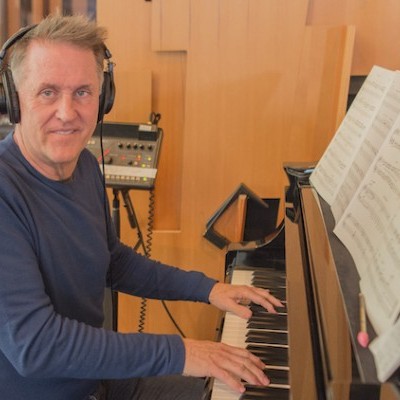
Goodwin was one of the most acclaimed, successful and influential jazz musicians of his generation.
Dec 9, 2025 12:28 PM
Gordon Goodwin, an award-winning saxophonist, pianist, bandleader, composer and arranger, died Dec. 8 in Los Angeles.…

Flea has returned to his first instrument — the trumpet — and assembled a dream band of jazz musicians to record a new album.
Dec 2, 2025 2:01 AM
After a nearly five-decade career as one of his generation’s defining rock bassists, Flea has returned to his first…
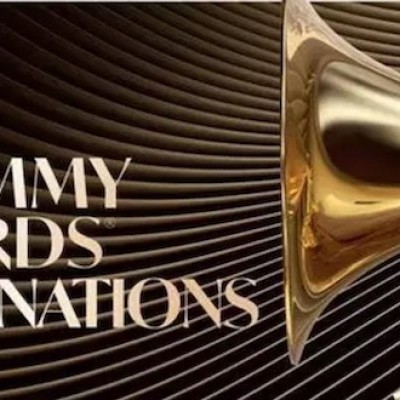
To see the complete list of nominations for the 2026 Grammy Awards, go to grammy.com.
Nov 11, 2025 12:35 PM
The nominations for the 2026 Grammy Awards are in, with plenty to smile about for the worlds of jazz, blues and beyond.…
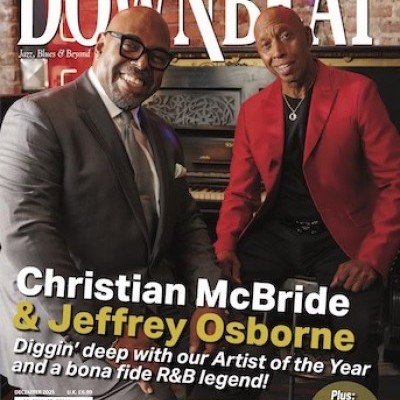
Nov 13, 2025 10:00 AM
For results of DownBeat’s 90th Annual Readers Poll, complete with feature articles from our December 2025 issue,…






